Seven-seater luxury SUVs, in general, have one big problem – that last row of seats. Often cramped and difficult to get into, these third row seats only offer limited comfort, if any. Worse still, they eat into useable boot space and make carrying a spare wheel difficult. This is why we strongly recommend that unless the third row will be used regularly, you are better off with a five-seater.
Mercedes and BMW have been offering the GLE-Class (previously known as the M-Class) and X5 (five-seater variant) for some time now. Now though, there's a new kid in town – Jeep – with its all-American Grand Cherokee. Being a Jeep, the Grand Cherokee is as SUV as an SUV gets, with a powerful engine, a squarish, stand-up design, large wheels housed in even larger wheel arches, a full-time four-wheel-drive and a low-ratio gearbox that is unique within its class, to handle those especially challenging terrains.
The Grand Cherokee will, however, be imported into India, thus making it a pricey proposition – while the Merc and Beemer are priced at Rs 72.9 lakh and Rs 72 lakh respectively, the comparable Grand Cherokee Summit variant is priced at a whopping Rs 1.03 crore. We put the three together on a combination of good and bad roads to answer the big question: despite the fat price-tag, can the American prove to be a viable alternative to the Germans?
What are they like to drive?
All three cars are powered by six-cylinder, 3.0-litre turbo-diesel engines, mated to automatic gearboxes with power channeled to all four wheels. However, the way this power is delivered and how the cars behave on the road varies widely.
The Jeep Grand Cherokee’s engine is a V6, with a power rating of 240hp. Start the car and you are surprised by how quiet and smooth the engine is at idle. Slot the gear lever into D and put your foot down on the throttle, and the car just takes off. The effective powerband stretches from 1,500 to about 3,800rpm, and the engine pulls robustly within it, with the feeling of power both ample and meaty. Refinement levels are high, so much that when cruising on the highway, the engine is almost silent, The smooth V6 is complemented by an eight-speed automatic gearbox that shifts ratios quickly. On empty roads, the car settles down comfortably in a high gear, but push the throttle harder for overtaking and the gearbox quickly shifts down to provide the requisite thrust.
The Grand Cherokee gets a fully independent suspension that is setup a bit stiff. Low speed ride, as a result, is slightly firmer than the competition here. While the ride is comfortable overall, especially once you up the pace a bit, the Jeep does tend to get knocked around a bit, in part due to the big 20-inch wheels.

The flipside of the firm suspension, however, is that the car feels planted and body roll is surprisingly well-contained around corners. In fact, the Grand Cherokee displays astonishing composure for a car its size. The steering offers lots of feedback to the fingertips and is accurate. However, it is a bit on the heavier side, something that is apparent especially while driving in the city.
What really sets the Grand Cherokee apart, though, is its ability to tackle difficult off-road conditions. It comes with 4 distinct off-road modes that help optimise the engine, gearbox, differential, brakes and stability system. But what truly sets it apart is the ‘4WD Low’ button that allows for an especially low gear ratio to be used in really challenging conditions like driving over rocks, where lots of initial torque is needed.
The Mercedes GLE 350d, like the Grand Cherokee, comes with a V6 under the hood, mated to Mercedes’ 9G Tronic auto ’box. This engine has the highest power rating of the bunch at 258hp, apparent when you put the foot down on the accelerator and the car pulls robustly, piling on speed rapidly. Strong performance is delivered from as early as 1,600rpm, all the way up to around 3,800rpm. From thereon till the 4,200rpm redline, however, it is mostly noise and little go.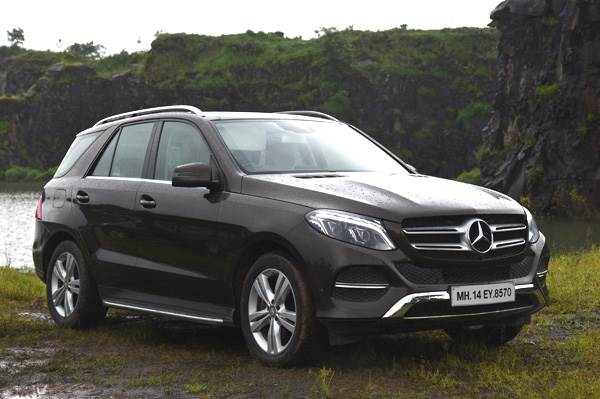
The Mercedes sits on all-round air suspension, unique in this class, and gets an adaptive damping system. The suspension does a great job of absorbing bumps and potholes, especially in Comfort mode, while maintaining impressive composure at high speeds. The active damping also helps change suspension characteristics in various modes, viz. Sport, Comfort, Slippery and Off-road, whereas the air suspension allows to increase the ground clearance by as much as 25mm.
The GLE 350d is not the best handler of the lot, though. The steering wheel feels a bit numb, indicating the GLE’s bias towards comfort as opposed to sportiness. The GLE enjoys going around corners sedately: hurl it into a bend and it feels sloppy, clearly communicating that it doesn’t enjoy being driven in this manner.
The BMW X5, unlike its rivals, gets an in-line six-cylinder engine. The diesel engine feels almost petrol-like due to how refined and rev-happy it is. This engine, without doubt, is the sportiest of the lot. There is a constant and linear flow of power from as early as 1,500rpm, and unlike the competition that have done their best work by 3,500rpm, this engine keeps on pulling and pulling all the way to 5,000rpm (or 5,600rpm in Sport+ and manual). What also sets the BMW apart are the sharp and crisp throttle responses: tap the accelerator and the car lurches forward, eager to spin its speedo needle. It is also the most vocal of the lot, emitting a sporty snarl. The eight-speed Steptronic gearbox it comes with is also the best here, delivering quick shifts and holding the revs until the redline.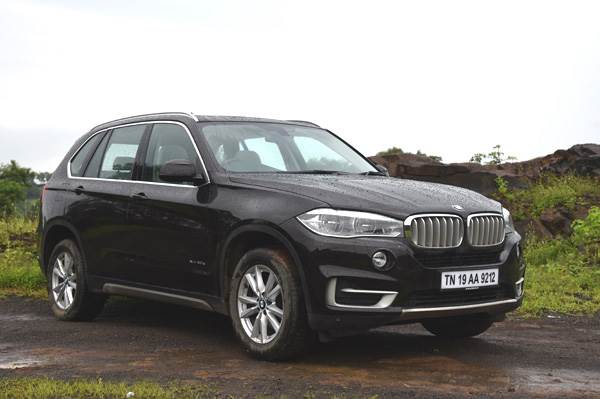
The X5 gets a traditional steel spring suspension setup in the front and air suspension in the back, armed with an adaptive damping system. The ride, especially in Comfort mode, is biased towards suppleness. While this allows the car to absorb most bumps quite well, it does result in some amount of up-and-down bobbing movement. The BMW rides on 18-inch wheels, the smallest in this comparison test, which help to improve its bump-swallowing ability.
The X5 gets BMW’s Servotronic adaptive steering assist, which adjusts the weight of the steering depending on vehicle speed and driving mode. In practice, this results in a steering that feels twitchy and nervous. In fact, the overall driving experience is somewhat spoiled by the steering. Unlike its rivals, the BMW does not get any off-road modes – it only gets Comfort, EcoPro, Sport and Sport Plus.
What are they like inside?
Climb into the Grand Cherokee, and you do need to climb in due to its high ground clearance and lack
of a running board, and you are greeted by a cabin that does not look as premium as you would expect. While the top of the dash is finished in leather and the instrument cluster contains a large screen that displays a wide range of information, there are a lot of cheap, tacky-looking plastics, especially in the centre console, that are unbecoming of a car that costs more than Rs 1 crore.
The front seats on the Jeep are large and comfortable, providing great support for big-framed people. The Jeep is also the only car in this comparison to get heated and ventilated front seats and heated rear seats. The steering wheel is large and chunky, and the driving position is the most SUV-like here, offering an elevated and commanding view of the road.

Rear passengers also sit on comfortable and supportive seats, and get screens mounted on the back of the front seats’ headrests. Legroom and thigh support are both sufficient, though not the best-in-class.
The Jeep’s boot is roomy, and you get the distinct feeling that it has been designed for those who really carry stuff around. There are metal strips on the floor to aid the sliding of large cargo, several hooks to anchor luggage in place and a scuff pad on the loading lip to prevent unnecessary scraping of the bumper. With the rear seats folded down in a 60:40 ratio, the boot can swallow as much as 1945-litres of luggage.

The Mercedes GLE 350d, in typically Mercedes style, greets you with a plush and well-appointed cabin. The dash is classy, finished in soft touch plastics and un-lacquered wood. Some hard plastics, especially in in the centre console, feel flimsy though.
The driver and the front passenger sit in plush, supportive seats, making the Merc the most comfortable in this class. The seats are equally comfortable in the rear, and unlike the other two, you are sat at a good height, allowing a more natural seating position. Rear legroom in the GLE is also the most here.
The Merc’s boot is quite roomy, at 690 litres with the seats up and 2,010 litres with them folded down (in a 60:40 ratio). The Merc too gets a scuff plate at the loading lip.
The BMW X5’s dash is typically BMW – fresh, modern, clean, and devoid of extraneous decoration, also finished in soft-touch plastics and wood. The instrument cluster, as opposed to the competition, is simplistic and clean, consisting of two analogue dials and a small screen at the bottom. While this may not be as data- and graphic-rich as the Merc or Jeep, it is very effective – a quick glance at the white-on-black dials is all you need to gather the requisite information. The modernist design is further accentuated by the wide infotainment screen and stylish gear selector stalk in the central console.

The front seats are large, supportive and comfortable, and offer a great view of the road ahead through the large windscreen. The rear seats, however, don't impress. While they can be slid forward and back, the seat cushion is too close to the floor and legroom is a bit tight.
What's interesting, however, is X5’s unique split tailgate. Opening the upper section is enough to access smaller luggage, whereas the lower section can be opened up into a picnic table-like shelf that can take loads of up to 250kg and make it easier to load bigger, heavier cargo. The rear seats fold down in 40:20:40 ratio, providing more flexibility for expanding boot space.
Equipment and Safety
All three cars in this comparison come with similar levels of equipment and safety. Common features across the three cars include electronically-adjustable front seats with adjustable lumbar support and three memory settings (the BMW only gets two), steering wheels that are electronically adjustable for reach and rake, infotainment systems with Aux, USB and Bluetooth connectivity and navigation, automatic headlamps, rain-sensing wipers, panoramic sunroofs, keyless entry, engine start/stop buttons, hill descent control and powered tailgates. They also come with eco features such as engine start-stop to make them more efficient.
The Jeep Grand Cherokee, in addition to the above features, gets heated front seats, rear seats, steering wheel and exterior mirrors. It is the only car here that gets a touchscreen for the infotainment system, and screens for the rear passengers. However, these screens have no support for USB. An additional, though not too useful, feature is the projection of the Jeep logo from under the exterior mirrors.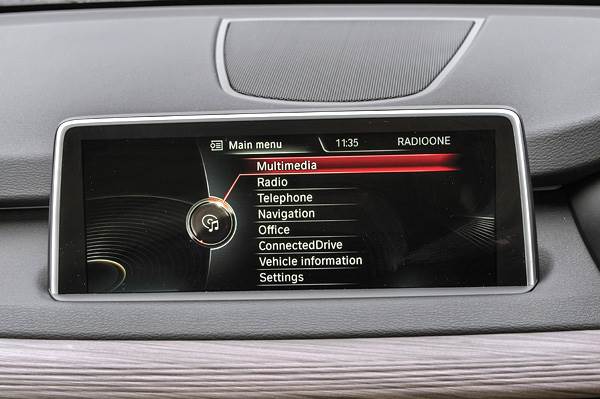
In terms of safety, the Grand Cherokee gets active headrests that move forward and upward in the case of a rear collision, systems that optimise braking performance during wet and emergency braking conditions, traction control, ABS, electronic stability control and seven airbags. It, however, misses out an adaptive headlight system, something that both its rivals get. Also, its climate control is only dual-zone.
The biggest differentiating feature in the Mercedes is its unique 360-degree camera. Cameras mounted on the rear and under the exterior mirrors present a 360-degree aerial shot of the car and its surroundings to simplify reversing and parking. The GLE 350d also gets three-zone climate control. Like the Jeep, it too gets logo projection. The Merc’s infotainment system consists of an 8-inch screen controlled via a rotating controller and/or touchpad.
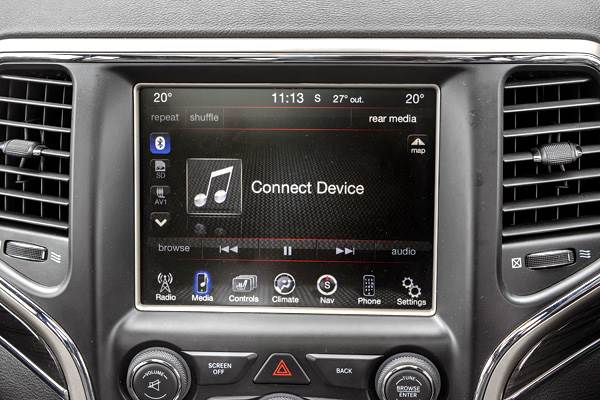
Safety features include adaptive brakes with brake priming and drying functions, attention assist, traction control, ABS, crosswind assist, eight airbags and the Mercedes Pre-Safe system, which initiates measures such as reversible seatbelt tensioning and closing open windows if it detects an imminent accident.
The BMW distinguishes itself from the crowd with four-zone climate control and headlight washers. The infotainment system gets a large landscape-oriented screen controlled by a rotary controller and/or a touch-sensitive pad. This iDrive infotainment system is the most intuitive of the lot. Safety-wise, the X5 coomes with attention assist, eight airbags, ABS, corner braking assist, traction control and side impact protection.
Buying and Owning
At Rs 1.03 crore, the Jeep Grand Cherokee (Summit variant) is substantially more expensive than the GLE 350d and the X5, which are priced at Rs 72.9 lakh and Rs 72 lakh respectively (all prices ex-showroom, Delhi), as it will be imported into India.
Owning the Grand Cherokee will probably also be a more difficult affair, due to the nascent dealership and service infrastructure for Jeep (currently, the brand has just two dealers in India). Mercedes and BMW, on the other hand, enjoy a higher level of localisation and better service infrastructure.
The Grand Cherokee is available in two trims, Limited and Summit. The Limited variant loses out on some interior trim, gets a slightly smaller touchscreen, no rear screens, smaller 18-inch wheels and a mechanical rear differential as opposed to the Summit’s electronic one. However, at Rs 93.64 lakh, it is a good Rs 10 lakh cheaper.
The Mercedes GLE 350d comes in only one variant, while the five-seater BMW X5 comes in three variants – Expedition, Design Pure and M Sport priced at Rs 67.9, Rs 72 and Rs 78.5 lakh respectively. Of the three, the middle variant strikes the best balance between cost and value, and is hence, the recommended one.
Verdict
The Jeep Grand Cherokee is the car to buy if you want the real deal – a tough-as-nails SUV that's genuinely capable off-road. Powered by a torquey, smooth and refined engine that does a great job of propelling its bulk and weight, the Grand Cherokee is good on the road and off it. The various off-road modes, the presence of 4WD Low and the overall solid build quality make it stand out from the competition. It, however, is let down by the poor plastics, firm ride, poor service and dealer infrastructure and substantially higher price-tag.
The BMW X5 xDrive 30d is the SUV to buy if you enjoy driving and will spend more time behind the wheel. It has by far the best engine and gearbox, and though the inconsistent steering is a let-down, this still is the most fun SUV to drive here. Adding to the pros, the cabin is well-designed and beautifully put together, and there is a pervasive air of ‘premiumness’ to it. The X5 loses out on top honours, though, due to the relatively uncomfortable back seat and bobbing ride.
Which brings us to the SUV to buy – the Mercedes GLE 350d. It does just about everything well. Its engine is powerful and enjoyable, seats the most comfortable, cabin the most indulgent, ride the best and equipment and safety features on par with the competition. Its steering might not be as engaging or feel-delivering as its rivals' and it may not possess either the off-road prowess of the Grand Cherokee or the fun drive of the X5, but when it comes to delivering that proper, indulgent and ostentatious five-seater luxury SUV experience, no one does it better. It's as simple as that.

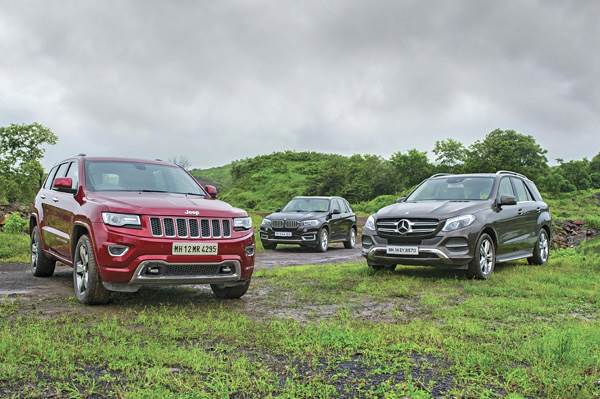
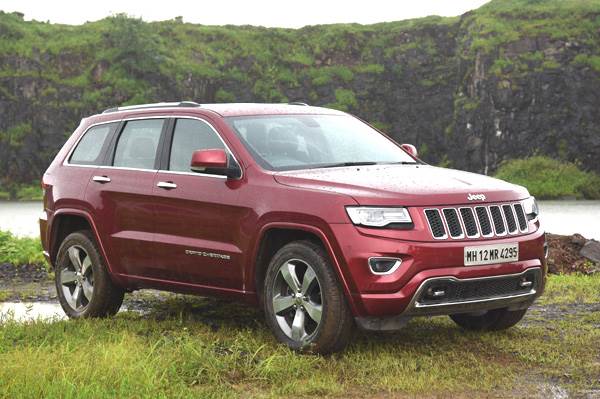

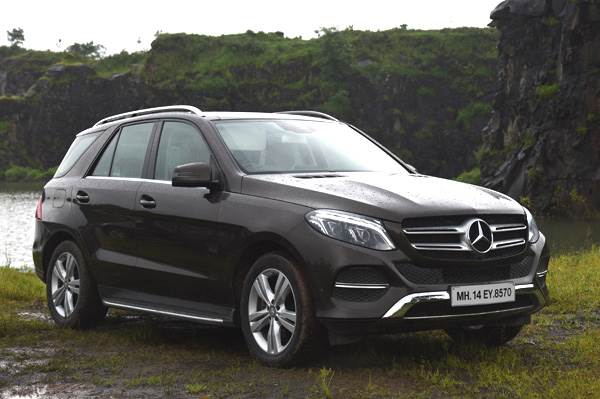

Comments
Member Login
Personal Details
No comments yet. Be the first to comment.